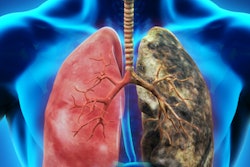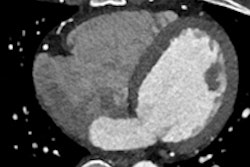
HAMBURG - Cloud-based solutions allow for effective analysis and comparison of radiation dose in CT exams across multiple sites, and represent a major step forward in ensuring patient safety, according to research presented at the 96th German Congress of Radiology (DRK), which began today.
Furthermore, a cloud-based approach helps to better identify potential for improvement in exam protocols and to further reduce exposure for patients.
Modern CT systems provide reliable, detailed information on radiation dose used in scanning, and CT dose index (CTDI) and dose-length product (DLP) data can be stored and analyzed in a PACS. In Germany, reference values have been defined for various body regions by the Federal Office for Radiation Protection (BfS), and all providers of imaging services need to comply with these values, which are calculated based on surveys.
But there is still room for improvement with regard to dose monitoring, noted Dr. Johannes Boos, from the Institute of Diagnostic and Interventional Radiology, Heinrich Heine University in Düsseldorf.
 Dr. Johannes Boos from Heinrich Heine University Düsseldorf.
Dr. Johannes Boos from Heinrich Heine University Düsseldorf."The existing values in Germany do not adequately describe certain patient groups, e.g., obese patients. There are no reference values for some body regions such as the neck, and values were established years ago when higher dose was still required to acquire quality diagnostic images," he said, adding that collecting and comparing dose data from all exams comes with multiple benefits.
Up to now, comprehensive studies of this kind caused a lot of effort, but this is changing. On the one hand, more and more radiological organizations have information on applied dose available in DICOM-SR (Structured Report) format. On the other hand, modern cloud-based software solutions allow for consolidation of the data, and for benchmarking between multiple sites and organizations.
For these reasons, Boos and his colleagues went for a cloud-based approach, and at DRK 2015 he presented the results of a study based on 33,000 exams carried out on four CT scanners and one PET/CT systems.
A custom-built cloud-based analysis tool has been in use since 2014. DICOM-SR data objects are forwarded automatically to the cloud-based server and stored there. The software has zero on-site footprint, and only a pseudonymization server is required at the site, Boos explained. Via a Web interface, radiologists with appropriate access rights can analyze the data according to defined criteria.
"We go to great lengths to ensure that the data are pseudonymized in a diligent manner to ensure no attribution to individual patients is possible," he said.
The software can analyze, for instance, how often the reference values defined by the BfS are exceeded in certain exams or body regions. This makes possible the optimization of radiation exposure by adapting protocols. Exposure can also be analyzed in relation with body size and weight.
It is of particular interest to use these analyses in cases where new dose-saving devices or protocols are introduced, underlined Boos, who sees the major benefit of cloud-based monitoring in quality management that reaches across an institution and beyond. Benchmarking analyses can help hospitals identify defined exam types and whether they are within the typical ranges of other institutions. In case of values exceeding typical profiles, they can change protocols or purchase equipment that administers less dose.
 Dr. Patric Kröpil from Heinrich Heine University in Düsseldorf.
Dr. Patric Kröpil from Heinrich Heine University in Düsseldorf.The team at Düsseldorf is open for further radiology departments to participate. A key challenge will be to align the heterogeneous definition and names of exam protocols -- which differ by organization, radiologist, and manufacturer -- to allow for comparisons. This is a prerequisite for matching protocols with body regions and BfS reference values automatically.
"Our long-term vision is to have all radiology units in Germany participate in cloud-based dose monitoring," said senior radiologist Dr. Patric Kröpil from the Institute of Diagnostic and Interventional Radiology at Düsseldorf University.
In the interests of the patient, this may enable continuous benchmarking in the light of changing technology.
"We estimate that comprehensive dose monitoring and benchmarking will turn into an essential part of future regulation," he said.
More funding will need to be found, however.



















